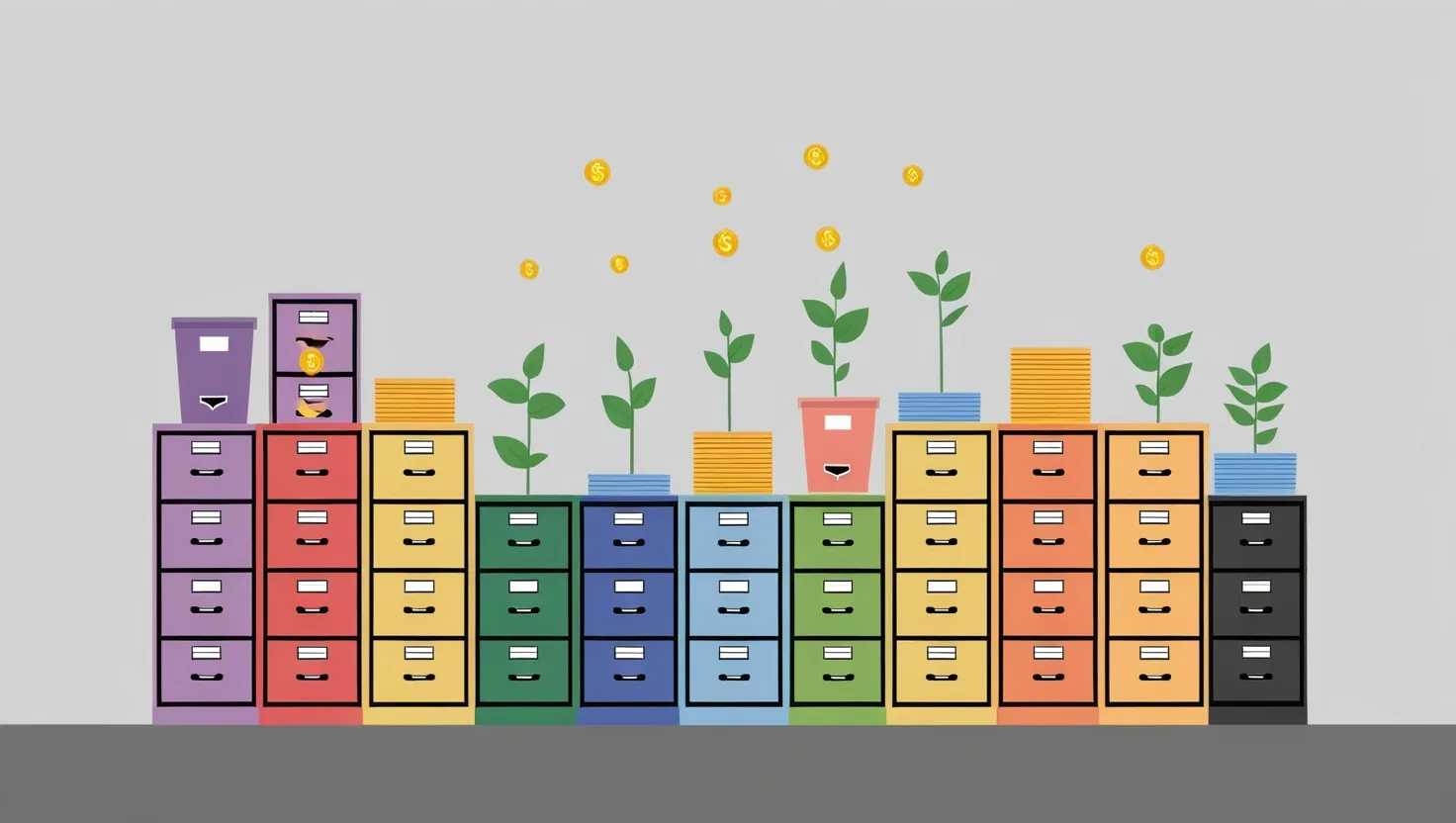Most people spend years researching what to invest in, but far fewer consider where to keep those investments. It’s a subtle distinction, but choosing the right home for each asset can quietly save you thousands—if not more—on your lifetime tax bills. Imagine having an invisible hand working behind the scenes, letting more of your money work for you just by being smart about account placement. So, let’s talk about how I approach this, and how you can too.
First, let’s clear up the basics. You probably have a mix of accounts—some are taxable, like your standard brokerage or joint investment account, and others offer tax advantages, like IRAs or 401(k)s. There are also Roth accounts, which flip the tax script by taxing you up front and sparing you later. At first glance, it looks like a game of “which bucket is fuller?” But the real magic is in matching the right investment to the right bucket. Why? Because every type of investment gets taxed differently—and every account has its own tax rules.
Here’s something most folks never spot: Bonds and certain funds spit out regular interest and dividends, and those are taxed again and again if kept in a regular brokerage account. But if you move those tax-inefficient assets into a tax-deferred account, like a traditional IRA or 401(k), those annual tax hits vanish until you withdraw funds, maybe decades later. Think of it as putting a noisy clock in a soundproof box—you get returns without the yearly tax disturbance.
Tax-inefficient assets include things like corporate bonds, high-turnover mutual funds, and certain real estate investment trusts (REITs). These investments can be productive, but they’re loud from a tax perspective. Putting them in a tax-deferred account is the financial equivalent of noise-canceling headphones. When the time comes to take money out, you’ll owe ordinary income tax, but you’ll have had decades of tax-free growth up front, meaning your pie is a lot bigger before the taxman takes his slice.
Now, let’s zoom in on taxable accounts. These are perfect for holding tax-efficient investments—things like broad index funds, individual growth stocks you can hold for the long term, and municipal bonds. Why? Because index funds and growth stocks often pay little or no dividends, so you’re mostly taxed only when you choose to sell, and then at the preferable long-term capital gains rate if you’ve held for more than a year. Municipal bonds often sidestep federal taxes altogether. This means that not only do you keep more money year after year, but you also retain flexibility with your portfolio. Have you ever asked yourself: “What if I need to liquidate some investments in an emergency?” In a taxable account, you can plan taxable sales as needed, keeping tax surprises to a minimum.
“Compound interest is the eighth wonder of the world. He who understands it, earns it… he who doesn’t, pays it.” — Albert Einstein
My favorite move, though, is with Roth accounts. If tax-deferred accounts are about avoiding today’s taxes and deferring tomorrow’s, Roth accounts are about paying now to win big later. Any growth in your Roth IRA or Roth 401(k) is never taxed again, provided you follow the rules. That means these are the ideal containers for your most aggressive, high-upside investments: small-cap stocks, emerging markets, and innovative technology funds. If something you hold in your Roth quadruples in value, you never owe a dime in tax on the gains. It’s astonishing how quickly this can snowball over decades. The trick is to be bold here—if you’re going to take risks anywhere, let it be in the place where the rewards are entirely yours to keep.
Ever wonder why so many wealthy investors obsess over taxes even after they’ve “made it”? Taxes are the enemy of compounding. Even a one percent drag each year adds up to a mountain of money over time. So, how do you cut that drag? Tax-loss harvesting is one answer—a move that feels like a financial chess play. If you own investments in a taxable account that drop below your purchase price, you can sell them, generate tax losses to offset gains (or up to $3,000 of ordinary income annually), and immediately buy something very similar to maintain your exposure. This lets you keep your investment strategy on track while using the tax code’s rules to your benefit. What if you catch yourself thinking, “Don’t I lock in a loss that way?” Not if you swap to a comparable fund; you maintain your strategy and potentially improve your tax picture.
“Taxes are what we pay for civilized society.” — Oliver Wendell Holmes, Jr.
Yet the real secret sauce isn’t just about optimizing each account in isolation. Too many investors view their retirement and brokerage accounts as separate silos, managing each by the same asset allocation—say, 60% stocks, 40% bonds—in every account. But what if you zoomed out and treated your entire household portfolio as one big pie? Now you can be strategic: load up your taxable accounts with index funds and municipal bonds, stock your 401(k) with bonds and REITs, and put all your moonshot stocks in your Roth. Suddenly, your overall risk level stays balanced, but your after-tax returns get a healthy boost. This “total portfolio” approach makes your money work harder as a coordinated whole.
How much can all this really add up to? It’s easy to underestimate. Over decades, a thoughtful asset location strategy can increase after-tax returns by half a percent to a percent and a half each year. The effect is like having your own mini pension fund growing quietly in the background. Have you ever calculated how small improvements, compounded over many years, could change what’s possible for you and your family? Consider running your own numbers; you might be shocked by how much you’re leaving on the table.
“Don’t tell me what you value. Show me your budget, and I’ll tell you what you value.” — Joe Biden
A big advantage, often overlooked, is flexibility in retirement. By holding a variety of account types—taxable, tax-deferred, and Roth—you create freedom to mix and match withdrawals and control your taxable income each year. This maneuvering room can help you stay in a lower tax bracket or limit costs tied to higher income, like Medicare surcharges. Isn’t it reassuring to know you have options—especially in a world full of unknowns?
You might ask, “What about estate planning?” The type of account each asset sits in affects what your heirs will pay in taxes. Assets passed from a taxable account usually get a step-up in basis, erasing capital gains taxes for your beneficiaries. But traditional IRA assets are taxed as regular income by your heirs, and Roth IRA balances may be withdrawn tax-free—often the best “inheritance dollars” you can leave. Do you want to leave a legacy that’s as tax-smart as possible? Now you can, simply by being methodical in which assets you hold, and where.
So, where do you start? Step back and look at your total portfolio across every account. Categorize your investments. Identify which are tax-inefficient (bonds, income-heavy funds, REITs) and which are tax-efficient (index funds, growth stocks, muni bonds). Rearrange your holdings so each investment “lives” in its most tax-advantaged spot. If you’re not sure how to adjust, start small: the next time you add cash to your accounts, allocate new money using these principles, rather than making big, disruptive changes all at once.
“What gets measured gets managed.” — Peter Drucker
The process may sound a bit technical, but it pays off quietly and consistently. I like to think of this strategy as working smarter, not harder. You don’t need to chase hot stocks or time the market. You simply need to put each asset in the right home, let compounding do its work, and keep the government from taking more than its fair share.
Ask yourself: Are your investments in the right places? Have you been missing out on easy tax savings? It’s never too late to give your portfolio a tax tune-up. The beauty is, the rules are largely the same for everyone, but so few take the time to coordinate across all their accounts. If you’re already saving and investing, you’ve done the hard part. Now, make your existing dollars stretch further by being a little more strategic about where they reside.
To sum up, the difference between a good investor and a great one often comes down to attention to detail. Asset location won’t grab headlines or ignite dinner table debates, but it’s one of the most effective, least risky strategies you can adopt. The wealthiest investors rarely talk about it because for them, it’s just common sense—a quiet engine running in the background, generating wealth year after year. So, are you ready to put your money in the right places and let time work its magic?






